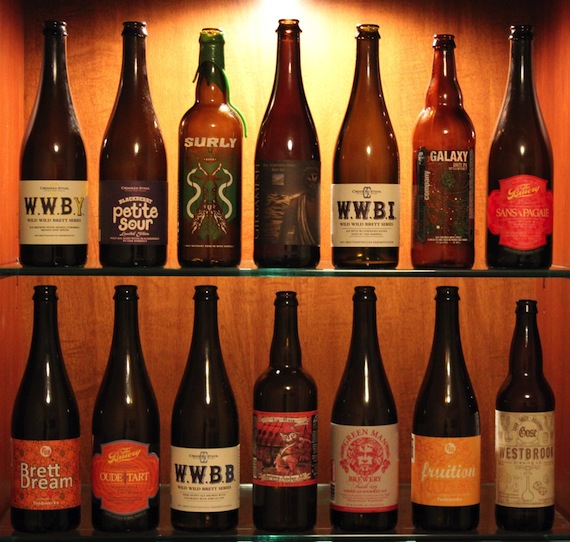When you think craft beer, you typically think of a hopped up IPA or a flavor boasting stout. Next to these two dominating beer categories, other genres tend to take a back seat. Sour beers, however, are making a statement and emerging on the craft beer scene faster than we can finish our bottle.
Probably one of the oldest styles in the world, sour beers were first brewed in Belgium before breaking ground in the U.S. less than ten years ago. Sour beers have little or no hops, a strange breakaway from your typical brew. In traditional brewing, yeast is added to the hops mixture to ferment sugars into alcohol. When making sour beers, not only is yeast added but also a healthy does of bacteria. Think of it as the yogurt of the beer world. While most American breweries manually add bacteria, some old school Belgian brewers allow wild yeast and bacteria to naturally invade the beer through the air. It’s risky business, but worth it for the tart, pungent and sour flavor these beers are known for.
Now that you know how sour beers got their name, you’re probably thinking: why would you drink a beer that ferments with bacteria and makes you pucker up every time you take a sip? For the flavor, of course.
We won’t deny that sour beers are an acquired taste but they’re due for more attention from drinkers. Their extremely low hop count gives sour beers a taste unlike any other out there. They’re tart, surprising and stun you at first sip. But with time, sour beers become a delicious balance that we think would be perfect for anyone that isn’t fond of the classic hoppy beer flavor. Someone that isn’t a typical regular beer drinker or a wine lover that enjoys a dry, tart flavor would be an ideal candidate. Sour beers have the potential to be the gateway brew for non-beer drinkers.
Give them a try; find out what all the hype is about. Tell us what you thought of them and how the sour flavor matches up to what you usually drink.
Please Note: This article was originally posted on 10/22/13 and updated on 2/14/23.


